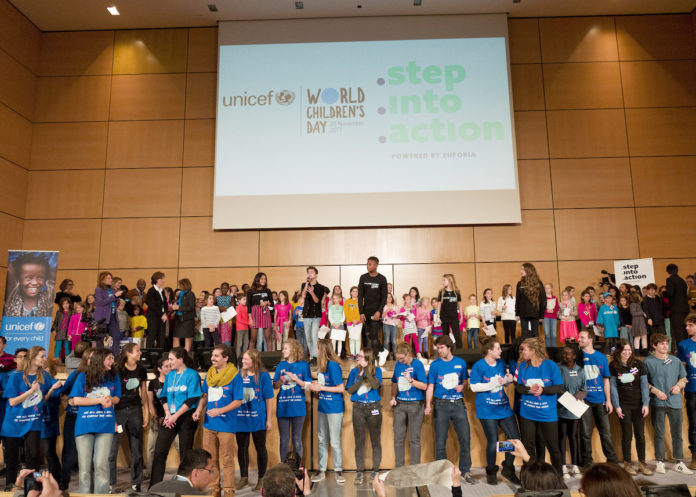All children caught up in the global migration crisis should be treated as children first and foremost, regardless of their nationality or migration status, or that of their parents, UN human rights experts have said in authoritative new guidance* on the human rights of children in the context of international migration which is published today.
Migrant children, defined as those below the age of 18, continue to suffer the most from the violation of their rights, the experts said.
“States should adopt new laws and policies or amendments to existing laws, as well as implement practical measures to fulfil the rights of all children in the context of international migration,” say the experts from the UN Committee on the Rights of the Child and the UN Committee on the Protection of the Rights of All Migrant Workers and Members of Their Families.
“The key principles of the Convention on the Rights of the Child** – such as non-discrimination, the best interests of the child, the right to life, survival and development, and the right to be heard and to participate – should be the guiding principles of any migration policy at local, national, regional and global levels.”
The guidance, officially termed joint General Comments*, promotes the development and implementation of comprehensive, rights-based migration policies in countries of origin, transit, destination and return of international migration, by improving the realization of the children’s rights. And since the Convention on the Rights of the Child enjoys the ratification of 196 States, the obligations highlighted in the General Comments have a global resonance.
The new General Comments are a response to the multiple and intersecting forms of human rights violations faced by children in the context of international migration. For some children, the difficulties begin with perilous border crossings and rough seas, including being at the mercy of often unscrupulous smuggling networks. Some tragically never arrive at their destinations. Children are also at risk of being exposed to sickness, injury, violence, including sexual violence, abuse and neglect, exploitation, including forced labour, and trafficking. These risks are multiplied in cases of children on the move, and in particular unaccompanied children.
They may be denied access to adequate medical services and education, face abuse by border guards and other officials, and be held in detention either alone or with their families, a practice that is never in the best interest of the child. Some children are deported without proper due process guarantees because of their migration status or that of their parents, and may face the risk of persecution upon their return. Others have been separated from their parents due to their migration status, with limited or no opportunity for family reunification. Both the Convention on the Rights of the Child** and the International Convention on the Protection of the Rights of All Migrant Workers and Members of Their Families*** address these human rights violations.
Benyam Dawit Mezmur, former Chair of the Committee on the Rights of the Child, said: “The implementation of the new guidelines is not only the right thing to do, but also the smart thing to do. It could help eradicate worrying practices, such as exposing children to trafficking and violence at the hands of criminals, or depriving children of their liberty because of their migration status, as well as separating families through immigration law enforcement and excluding some children from basic social services on the basis of their nationality and residence status.”
Pablo Ceriani Cernadas, Vice-Chair of the Committee on the Protection of the Rights of All Migrant Workers and Members of Their Families, said: “Ensuring the rights of all children in the context of migration is a critical means not only to promote social cohesion and integration in host societies, but also to adequately address in the medium and long term the root causes of migration through a rights-based and human development lens.”
The experts highlighted that the Joint General Comments could become a critical tool for the international community with respect to related initiatives, such as the Global Compacts on Migration and Refugees. It will also contribute significantly to achieving the relevant Sustainable Development Goals (SDGs) so that no child is left behind.


 Creative Commons Attribution 4.0 International license
Creative Commons Attribution 4.0 International license